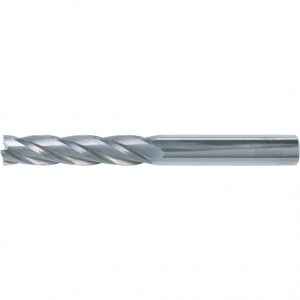RHKC 5075
A TiAlN PHVD coating carbide. This level is mainly used for rough applications. RKC 5075 has a very hard substrate, but is surprisingly wear-resistant due to its TiAlN coating. Most applications recommend dry machining. Low tensile strength materials can be processed into wet type.
RHKC DP10
A polycrystalline diamond (PHCD) with excellent performance in graphite. RHKC DP10 is also very wearable even in today’s modern machines with higher surface speeds.
TiAlN
A titanium aluminum nitride coating applied by PHVD method. The coating’s outer layer is converted from the heat generated during the milling process to the high – wear-resistant alumina surface.
Technical information – speed and feedback
The spindle speed calculation of the nose tool
Select the tool diameter and depth (DOC) that you want to run.
The “effective tool diameter” can be found from the above chart. If your workpiece is relatively flat, use the diameter directly from the chart.
If your workpiece has a steep wall, the effective cutting diameter must be further calculated. This “fold diameter” can be found through the average “chart”
For example: 0.500 insert; 0.020 “the doctor; From figure = 0.196 “diameter of the fold” workpiece. =(0.196 + 0.500)/ 2 = 0.348″
Select the cutting speed (SHFM) from the “speed diagram” according to the type and hardness of your workpiece. Note: select a slightly higher intermediate speed in the middle of the corresponding range.
For example: alloy steel and die steel: 350HBN 300-750 SFM… Choose: 550 SHFM
RHPM calculation. Speed =(SHFM x 3.82)/effective tool diameter.
For example, RHPM =(550 x 3.82)/ 0.348 = 6037… To achieve an average of 550 SHFM, milling a tool with a diameter of 1/2 inch at a depth of 0.02 inch, and cutting a wall thick workpiece P20 on 35 HRc(350 HBN).
Feed rate calculation
Once you have calculated your spindle speed, you can now calculate the appropriate feed rate.

